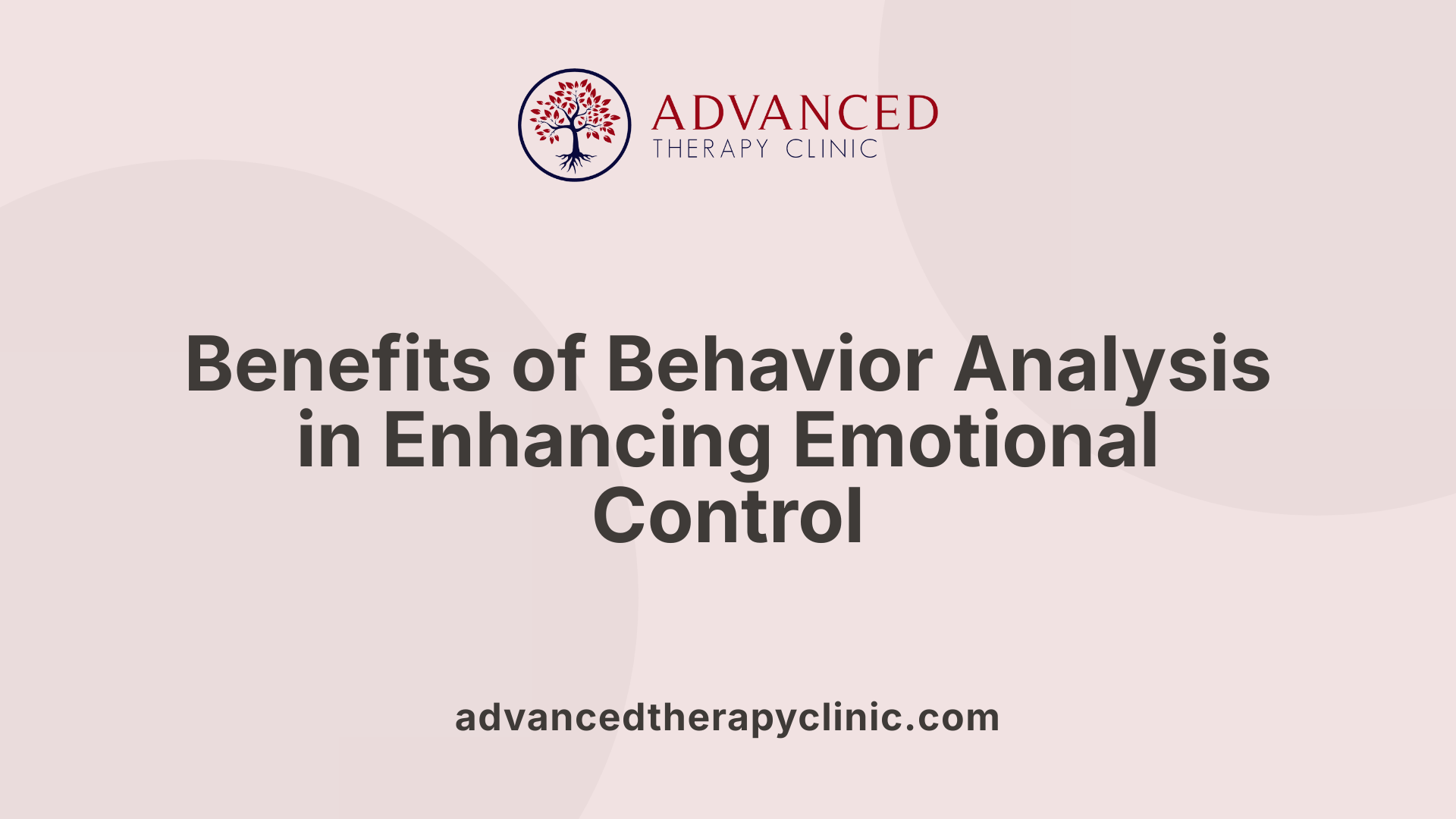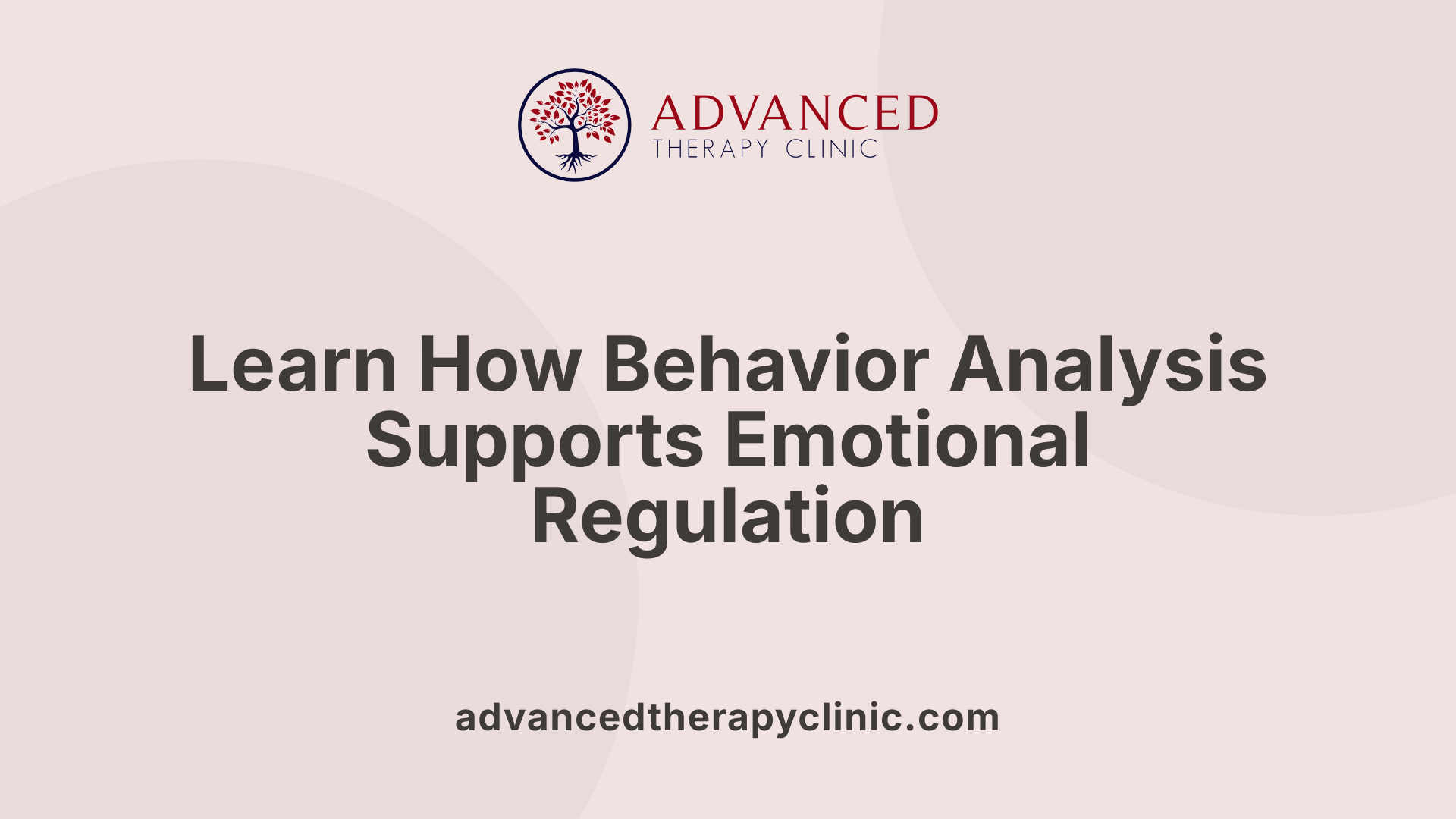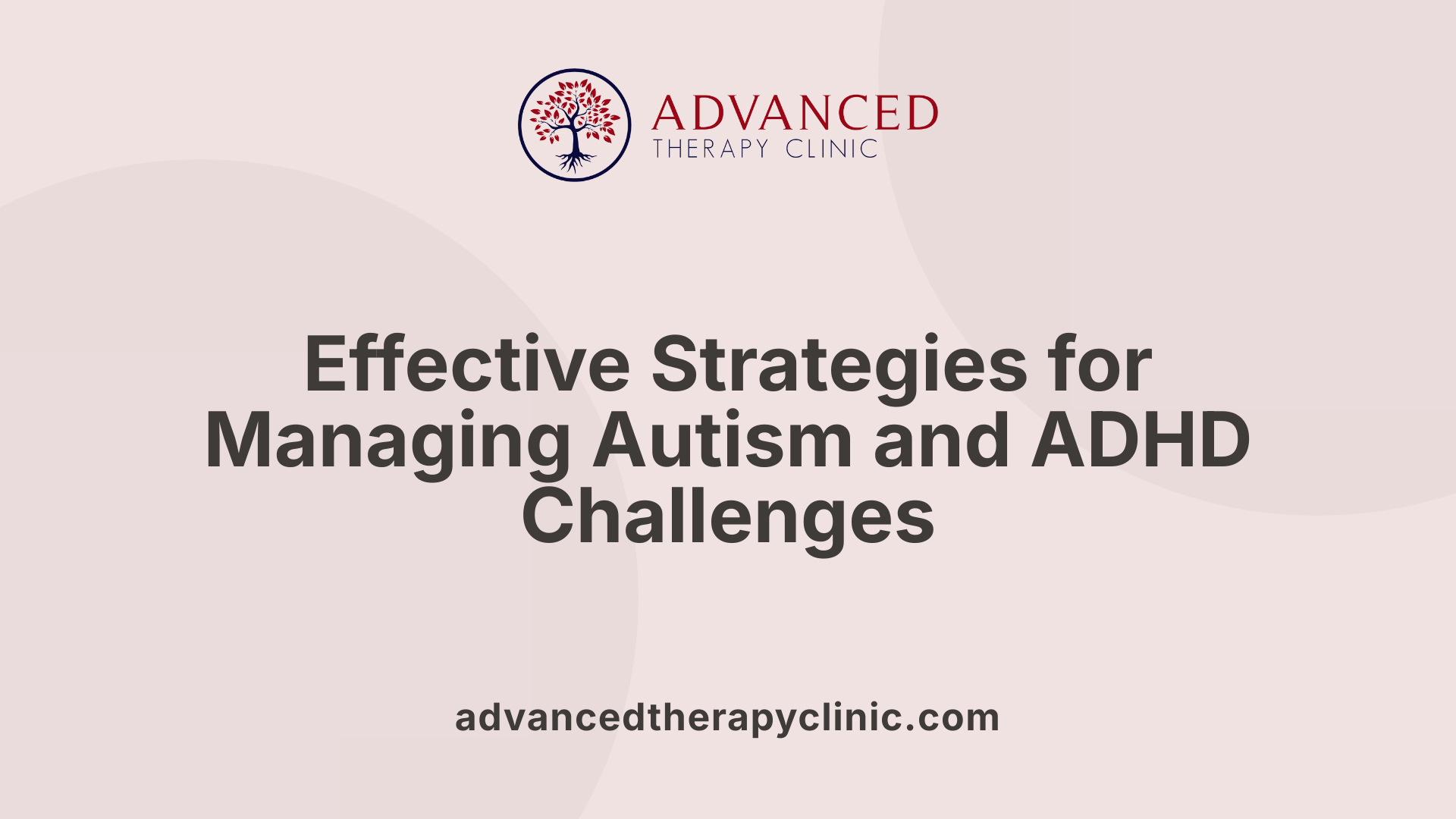How Behavior Analysis Helps with Managing Behavioral Outbursts


Understanding and Addressing Behavioral Outbursts Through Evidence-Based Strategies
Behavioral outbursts, such as aggression, anger, and emotional dysregulation, are common challenges faced by children and adolescents with autism, ADHD, and other developmental conditions. Managing these behaviors effectively hinges on understanding their underlying causes and applying tailored interventions. Behavior analysis, especially Applied Behavior Analysis (ABA), offers a structured and scientifically supported approach to reduce problematic behaviors, promote emotional regulation, and improve quality of life for individuals and their families.
The Role of Functional Behavioral Assessments in Behavior Management
How does behavior analysis, including ABA therapy, help manage and reduce behavioral outbursts in children and individuals with developmental conditions?
Behavior analysis, particularly through Applied Behavior Analysis (ABA) therapy, is a structured approach used to understand and modify problematic behaviors. A crucial part of this process is conducting a Functional Behavioral Assessment (FBA), which helps identify what triggers aggressive and disruptive behaviors.
An FBA involves carefully observing and analyzing the child's behavior in various settings to determine the antecedents (what happens before the behavior) and the consequences (what occurs after). This analysis sheds light on the purpose or function of the behavior, such as seeking attention, avoiding tasks, or expressing discomfort.
Once the triggers and functions are understood, therapists and caregivers can develop tailored interventions. These strategies often include positive reinforcement to encourage desirable behaviors like calm responses or effective communication. Techniques such as teaching coping mechanisms, communication skills, and emotional regulation are central to these plans.
Interventions may incorporate visual supports like picture schedules, environmental modifications to reduce sensory overload, and consistent responses to behaviors to reinforce learning. Parent training programs, such as Parent Management Training (PMT), further empower caregivers to implement effective strategies at home.
In individuals with autism and other developmental conditions, these targeted approaches are adapted to meet their specific needs. The goal is to replace maladaptive behaviors with functional alternatives, improving overall quality of life. Combining behavioral interventions with medical management, when necessary, provides a comprehensive support system.
Overall, behavior analysis and ABA therapy help manage outbursts by understanding their environmental and emotional roots, equipping individuals with skills to handle stress and communicate effectively. This approach leads to reductions in aggression and fosters more positive interactions and improved emotional well-being.
Techniques and Strategies in Behavior Analysis to Address Disruptive Behaviors

What are some methods and techniques used in behavior analysis, such as ABA, to address disruptive behaviors like anger and aggression?
Applied Behavior Analysis (ABA) employs a variety of evidence-based techniques to help reduce disruptive behaviors such as anger and aggression in children with autism. Central to these methods are positive reinforcement, modeling, prompting, and fading. Positive reinforcement involves giving a desirable stimulus after a preferred behavior, which encourages the individual to repeat this behavior. Modeling and prompting provide guided practice of appropriate responses, while fading gradually reduces assistance to foster independence.
Behavior chaining and task analysis are also fundamental strategies in ABA. Chaining teaches complex behaviors by linking simpler tasks, either forward or backward, to form a complete sequence. Task analysis breaks down skills into manageable steps, making learning more accessible. Extinction techniques, which involve withholding reinforcement for problematic behaviors, help decrease their frequency over time.
Functional Communication Training (FCT) plays a vital role by teaching children alternative ways to express their needs and emotions. Visual supports, such as picture boards or schedules, facilitate communication and help prevent frustration-induced aggression. The use of scripts and social stories provides consistent cues, guiding children toward appropriate responses.
In addition, strategies like redirection and social skills training enhance emotional regulation and interpersonal interactions. Differential reinforcement strengthens desired behaviors while reducing undesired ones by selectively rewarding appropriate responses.
Finally, modifying environmental factors plays a crucial part. Adjustments include establishing predictable routines and minimizing triggers through environmental modifications. This comprehensive approach of identifying triggers, teaching new skills, and reinforcing positive behaviors effectively reduces aggressive incidents and promotes adaptive emotional responses.
Benefits of Behavior Analysis in Emotional Regulation

What are the benefits of behavior analysis approaches in improving emotional regulation and managing behavioral challenges?
Behavior analysis techniques, especially Applied Behavior Analysis (ABA), are highly effective in helping children and individuals with autism develop better emotional regulation and reduce problematic behaviors. These methods focus on understanding the specific triggers and functions behind behaviors like aggression or tantrums.
Through tailored interventions, ABA teaches communication and social skills that enable individuals to express needs more effectively, reducing frustration and misunderstanding. Improved communication often leads to fewer emotional outbursts and helps individuals navigate social situations more comfortably.
Implementing positive reinforcement strategies encourages calm responses and effective coping skills. This continuous reinforcement helps replace disruptive behaviors with more appropriate options, fostering emotional stability.
Furthermore, ABA promotes independence and daily living skills such as self-care, problem-solving, and self-regulation techniques. By breaking down complex skills into manageable steps with tools like task analysis and chaining, children learn to handle stress and manage emotions independently.
Overall, these approaches lead to long-term advantages, including enhanced emotional control, improved social interactions, and a significant decrease in aggressive and disruptive behaviors. Families and caregivers benefit as well, experiencing calmer homes and stronger relationships.
| Skill Developed | Techniques Used | Outcome |
|---|---|---|
| Communication Skills | Functional Communication Training (FCT), Modeling, Role-Playing | Better expression of needs, less frustration |
| Emotional Self-Regulation | Teaching coping strategies, relaxation techniques | Reduced tantrums and aggression |
| Daily Living & Social Skills | Task analysis, Chaining, Visual supports | Increased independence and social integration |
| Behavior Modification | Positive reinforcement, Antecedent interventions | Long-lasting behavioral improvements |
Supporting Emotional Self-Regulation and Mitigating Outbursts with Behavior Analysis

How does behavior analysis help in understanding triggers and responses related to emotional outbursts?
Behavior analysis systematically examines the events that occur before and after emotional responses to identify patterns and triggers. By observing antecedents—such as loud noises, sudden changes, or sensory overload—and consequences, such as attention or escape from a situation, practitioners can determine what prompts aggressive or emotional outbursts. This detailed understanding enables tailored interventions that modify environmental factors, reducing the likelihood of triggers.
What techniques are used to teach self-regulation strategies like relaxation and task breakdowns?
ABA employs several proven methods to enhance emotional regulation. Relaxation techniques, such as deep breathing or progressive muscle relaxation, are taught through modeling and practice, helping children calm themselves during moments of stress. Additionally, breaking down complex tasks into smaller, manageable steps makes challenges less overwhelming and helps prevent frustration. Teaching children to recognize their emotional states early allows them to deploy these strategies proactively.
How are social stories and visual supports used to reinforce emotional coping?
Social stories and visual supports are powerful tools in ABA to teach appropriate emotional responses. Social stories provide clear, visual narratives that illustrate how to handle different situations calmly and effectively. Visual supports like picture schedules or emotion cards help children recognize their feelings and understand suitable responses. Consistent use of these tools reinforces coping strategies, making emotional regulation more accessible across various environments.
What is the overall role of behavior analysis in supporting emotional regulation and reducing outbursts?
Behavior analysis plays a comprehensive role in supporting emotional regulation by systematically identifying the environmental and internal factors that influence emotional responses and maladaptive behaviors. Through techniques such as Functional Communication Training, relaxation exercises, self-monitoring, and the use of social stories, ABA teaches individuals effective coping strategies and appropriate ways to express emotions.
Interventions are highly personalized and data-driven, allowing practitioners to tailor programs that target specific emotional regulation skills and executive functioning, including interoception and impulse control. By analyzing antecedents and consequences, behavior analysts can modify environmental conditions to reduce triggers for emotional outbursts and promote adaptive behaviors.
Overall, ABA facilitates skill development that helps individuals manage their emotions effectively and mitigate behavioral outbursts, leading to improved well-being and social functioning.
Applying Behavior Strategies for Children and Adolescents with Autism and ADHD

How can behavior analysis strategies be applied to control and prevent behavioral outbursts in children and adolescents with conditions like autism and ADHD?
Behavior analysis techniques are proven effective for managing challenging behaviors such as aggression, impulsivity, and emotional outbursts in children and adolescents with autism and ADHD. One of the first steps involves conducting a functional behavior assessment (FBA). This helps identify the specific triggers and functions behind problematic behaviors, whether they are seeking attention, avoiding a task, or responding to sensory overload.
To address these triggers proactively, tailored interventions include creating structured routines that provide predictability and reduce anxiety. Visual supports such as picture schedules, timers, or visual cues also help children understand what to expect, easing transitions and reducing frustration.
Teaching coping mechanisms and communication skills is essential. Strategies like functional communication training (FCT) give children alternative ways to express their needs or discomfort, decreasing the likelihood of aggressive responses. For example, using picture boards or developing verbal skills enables children to communicate effectively without resorting to outbursts.
Reinforcement plays a crucial role in behavior management. Positive reinforcement involves rewarding calm and adaptive responses with praise or preferred activities, which encourages continued positive behavior. Differential reinforcement techniques, such as rewarding desired behaviors while ignoring or redirecting undesired ones, help promote more prosocial responses over time.
Immediate strategies like neutral redirection divert attention from triggers without punishment, helping children learn appropriate reactions in the moment. Skill development interventions focus on teaching emotional regulation, problem-solving, and social skills, further reducing the likelihood of outbursts.
Importantly, caregiver involvement enhances these efforts. Training and coaching parents and other caregivers ensure consistency across home, school, and community settings. Collaboration with mental health professionals when needed further supports comprehensive and individualized management plans.
Overall, combining these evidence-based behavior analysis strategies provides a structured, supportive approach to reduce behavioral outbursts and promote emotional and social development in children and adolescents with autism and ADHD.
Techniques for Understanding and Reducing Aggressive and Disruptive Behaviors

How do behavior analysis techniques work in understanding and reducing aggressive and disruptive behaviors?
Behavior analysis techniques play a crucial role in managing difficult behaviors such as aggression in children with autism. Central to this approach is the use of Functional Behavior Assessments (FBAs), which help identify what triggers a child's aggression. These assessments analyze antecedents—what happens before the behavior—and consequences—what happens afterward—to understand the function behind the behavior. For example, if a child becomes aggressive when routines are disrupted, the behavior may be a response to stress or anxiety.
Once the causes are understood, personalized intervention plans are created. These plans use positive reinforcement to encourage desirable behaviors, such as calm responses to frustration, and teach alternative skills like effective communication or self-regulation techniques. Skill training often involves breaking down complex behaviors into small, manageable steps through techniques like task analysis.
Additionally, chaining methods are used to teach sequences of actions that help children perform daily routines independently. Visual supports, such as picture schedules and prompting, guide children through tasks and expectations, easing their transition and reducing anxiety.
Modeling and role-playing are valuable tools in therapy, allowing children to practice appropriate responses in a safe environment. Redirection strategies help shift focus away from triggers or aggression, guiding children toward more acceptable behaviors.
Throughout this process, consistent data collection tracks progress and evaluates the effectiveness of interventions. Adjustments are made to keep the approach tailored to the child's evolving needs. By systematically addressing the causes of aggression and teaching healthier responses, behavior analysis fosters lasting change. This comprehensive method not only reduces disruptive behaviors but also improves communication and emotional regulation, laying a foundation for better social interactions and independence.
Effectiveness of Behavioral Interventions and Collaborative Approaches
What is the effectiveness of behavioral interventions such as Parent Management Training (PMT), Cognitive-Behavioral Therapy (CBT), and ABA therapy in managing behavioral issues?
Behavioral interventions like PMT, CBT, and ABA have shown strong and consistent evidence supporting their ability to reduce challenging behaviors and improve functioning. These approaches employ empirically supported techniques such as positive reinforcement, modeling, social skills training, and environment modification.
Research from numerous studies underscores their success. For example, ABA therapy, which involves studying antecedents and consequences to shape behavior, has been proven effective in decreasing aggression, tantrums, and other problematic behaviors in children with autism.
Parent Management Training (PMT) focuses on training parents to reinforce desired behaviors and apply consistent consequences at home. This program significantly improves family interactions and helps lessen disruptive behaviors over time.
Cognitive-Behavioral Therapy (CBT), particularly the transdiagnostic approach tailored for anger and irritability, helps children and adolescents recognize triggers, develop emotion regulation skills, and solve social problems. These techniques lead to notable reductions in aggression and improvements in emotional control.
All three therapies produce benefits that are often durable, with positive outcomes lasting months or even years after treatment. The success of these interventions depends on factors like individualized planning, therapy fidelity, and active participation by children, parents, and caregivers.
In summary, well-implemented behavioral strategies provide a foundation for meaningful, lasting change in managing behavioral challenges, especially in children with neurodevelopmental or mental health conditions.
Specific Techniques Used in Behavioral Management and Their Application Examples
Can you provide examples of specific behavior analysis techniques used in behavioral management?
Behavior analysis employs a variety of targeted techniques to encourage positive behaviors and reduce challenging ones. One fundamental approach is positive reinforcement, which involves adding a pleasant stimulus following a desired behavior to increase its likelihood. For example, giving a child praise or a favorite toy when they use appropriate communication helps reinforce that behavior.
Prompting is another widely used strategy. It involves providing cues or hints to guide the individual toward the correct behavior. Over time, prompts are gradually faded to foster independence. For instance, a teacher might initially guide a child's hand to point at an object, then reduce the assistance as the child becomes more proficient.
Behavior chaining is employed to teach complex sequences by breaking them into smaller, manageable steps. This might include teaching a child to put on their coat, with each step learned separately and then linked together.
Extinction involves withholding reinforcement for behaviors that are undesired, thereby reducing their occurrence. For example, if a child throws a tantrum to gain attention, ignoring the tantrum can lead to a decrease in that behavior.
Functional Communication Training (FCT) is crucial for helping children express needs constructively. Instead of acting out aggressively, a child might learn to use picture cards or verbal phrases to request a break or a preferred item.
Other supportive techniques include modeling appropriate behaviors, employing visual aids like schedules, establishing reinforcement systems, and analyzing antecedents and consequences through ABC charts. These methods work collectively within a structured, evidence-based framework to shape adaptive behaviors in children with autism.
Empowering Change through Evidence-Based Interventions
Behavior analysis, including ABA, parent training, and cognitive-behavioral approaches, plays a vital role in managing and reducing behavioral outbursts related to autism, ADHD, and other developmental conditions. By identifying triggers, teaching emotional regulation, and fostering effective communication, these strategies create calmer, more predictable environments that support individuals' growth and independence. The collaborative and multifaceted nature of these interventions ensures sustained progress, improved relationships, and enhanced quality of life for both individuals and their families. As research continues to advance, the application of targeted, evidence-based behavioral strategies remains a cornerstone in behavioral health and developmental support.
References
- How ABA Therapy Helps Reduce Aggressive Behavior
- Behavioral Interventions for Anger, Irritability, and Aggression in ...
- From Meltdowns to Calm:ABA Therapy Strategies for Managing ...
- 13 Applied Behavior Analysis Examples - Sevita Blog
- Autism aggression: What can help?
- Managing Aggressive Behavior in Adolescents With Autism ...
- Behavioral Interventions for Anger, Irritability, and Aggression in ...
- Complete Guide to Managing Behavior Problems - Child Mind Institute
- Applied Behavior Analysis in Anger Management Therapy
Recent articles

What Is Speech Fluency?
Understanding the Essentials of Speech Fluency and Its Disorders

What Is Speech Fluency?
Understanding the Essentials of Speech Fluency and Its Disorders

Teaching Writing to Students with Autism
Unlocking the Potential: Effective Writing Instruction for Students with Autism

Teaching Writing to Students with Autism
Unlocking the Potential: Effective Writing Instruction for Students with Autism

Speech Therapist School
Navigating the Path to a Rewarding Career in Speech Therapy

Pediatric Speech Therapy Programs
Unlocking Potential Early: The Role of Speech Therapy in Pediatric Development

